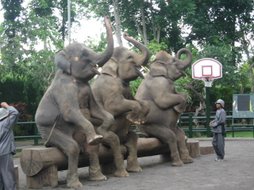Munadia*, NuryNusdwinuringtyas*, Amendi Nasution*, Suryanto**
*Physical Medicine and Rehabilitation Department, Faculty of Medicine,University of Indonesia/Cipto Mangunkusumo Hospital, Jakarta
**Medical Research Unit, Faculty of Medicine, University of Indonesia, Jakarta
Abstract:The aim of this study is to get standard value of six-minute-walk test for children aged 9-10 years as well as exploring the correlation of sex, body weight, and height with walking distances. The standard value could later be used to measure functional capacity, monitor progress of disease, and response to treatment of disabled children. The subjects consist of 194 boys and 198 girls aged 9-10 years in Central Jakarta’s public elementary school. Baseline examination comprised of body weight, body height, vital signs, standard physical examination, and nutritional state with Epi Info. Walking instructions were given prior to the test. Vital signs were re-measured afterward. No significant difference found in the subject’s anthropometric characteristics. Consecutively, boys’ and girls’ walking distances were 500.08 meter and 481,82 meter. There was significant difference in walking distance between both sexes. There was weak and no significant correlation between body height, body weight, body mass index, and walking distance in boys and girls, except for girls’ body height. Vital signs had significant difference before and after test. Performing a six-minute-walk test is feasible, easy, and practical in children, but very dependant upon the child’s motivation and coordination.
Keywords: children, six-minute-walk test, exercise testing

